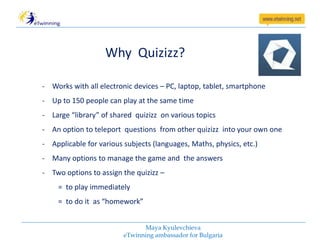Are your WordPress themes fully accessible to people with impaired vision or hearing? How comprehensive is their user experience? Could you enhance your web development process by incorporating React ARIA Hooks in it to improve accessibility?
According to the World Health Organization, 15% of the world’s population live with some form of disability and Center for Disease Control and Prevention states that 1 in 4 adults in the U.S have a type of disability. This demonstrates that a significant number of users might face challenges while navigating through websites that are not optimized for accessibility. This represents a major issue in today’s digital age where accessibility should be a priority to ensure inclusivity for all users. React ARIA hooks could provide an effective solution for this problem by enhancing your WordPress theme’s accessibility while also improving user experience and usability.
In this article, you will learn the fundamental perspective of enhancing WordPress theme accessibility using React ARIA Hooks. This could transform the way you approach web development and design, paving the way for an inclusive digital environment that caters to all users.
We will dive deep into understanding the use of ARIA hooks in React, its integrations with WordPress themes, and its implications for accessibility. Readers will also learn the technicalities behind implementing these hooks to improve their overall WordPress site development and performance.

Definitions and Key Concepts for Enhancing WordPress Theme Accessibility with React ARIA Hooks
WordPress refers to a popular online platform that allows users to create their own websites and blogs.
Theme in WordPress is a collection of styles and templates that defines the site’s aesthetic.
While accessibility means making your website easy to navigate and understand for everyone, including users with disabilities.
React is a JavaScript library for building user interfaces, designed to make the process of building modular, reusable user interface components simple and intuitive.
ARIA, which stands for Accessible Rich Internet Applications, is a set of attributes that define ways to make web content and web applications more accessible to people with disabilities.
Hooks are a new addition in React, that allows you to use state and other React features without writing a class.
React ARIA Hooks are then a combination of the two, enabling developers to make their WordPress themes more accessible by incorporating ARIA attributes in their React components.
Unlocking the Power of React ARIA Hooks for Superior WordPress Theme Accessibility
Unlocking the Potential of React ARIA Hooks
The increase in the digital presence of businesses in today’s world has brought about a higher need for web accessibility. WordPress, being the leading platform for content management, holds an essential role in delivering accessible websites to users. One of the many ways this is achieved is through using React ARIA hooks in WordPress theme development. ARIA, which stands for Accessible Rich Internet Applications, provides ways to make web content more accessible to individuals with disabilities.
React ARIA allows developers to create reusable components that meet accessibility standards, thus making WordPress themes more user-friendly and all-inclusive. Instead of investing extra time and resources into constantly fixing and testing for accessibility issues, developers can use React ARIA hooks to ensure their themes meet accessibility guidelines from the get-go.
Implementation of React ARIA Hooks for Increased WordPress Theme Accessibility
The integration of React ARIA hooks into WordPress theme brings several benefits, including offering accessible components out-of-the-box, solving common accessibility problems, and delivering a more inclusive user experience. React ARIA hooks not only allow you to enhance your WordPress theme’s accessibility but also let you create more flexible and reusable components, boosting the overall user experience.
With React ARIA, common issues like keyboard navigation, focus management, and text resize are taken care of. Other benefits include readable and consistent code, as well as better site performance. This means a faster and smoother user experience – a key ranking factor in SEO.
- Keyboard Navigation: React ARIA ensures that all elements in your WordPress theme are easily navigable with a keyboard.
- Focus Management: Managing focus is crucial for a positive user experience. React ARIA makes sure that the browser focus is directed to the most suitable component.
- Text Resize: With React ARIA, users can adjust the text size as per their requirements, ensuring a seamless reading experience.
Integrating React ARIA hooks into WordPress theme development allows for a more inclusive and user-friendly website. It’s not just an advantage for users with disabilities but for all users, democratizing access to information and enhancing overall user experience. This approach is a testament to the adaptability of both WordPress and React ARIA, continually evolving to meet users’ needs and expectations. By harnessing the power of these tools, developers can build a more inclusive web, demonstrating both innovation and social responsibility.
Combating Web Inaccessibility: The Role of React ARIA Hooks in WordPress Theme Enhancement
Why Should Accessibility Be Your Priority?
How important is it for your WordPress theme to be accessible for all users regardless of their abilities? The key idea lies in being inclusive. Software applications and websites are commonly built with an average user in mind. But the true essence of building a user-friendly interface is ensuring that it’s accessible to everyone, including those with physical, visual or cognitive disabilities. This is where the use of Accessible Rich Internet Applications (ARIA) comes in alongside React.js hooks. React ARIA is a collection of Hooks that provides accessible UI primitives for your React applications. Leveraging these advanced web technologies not only propels your WordPress theme above its peers, it also ensures your users enjoy a seamless experience.
Addressing The Core Issue
The problem, however, often lies in the implementation intricacies that come with these advanced web technologies. Adherence to accessibility standards (like WCAG) is agruably a complex task tangled with comprehensive guidelines and technical practices to follow. It becomes especially challenging with dynamic content and advanced user interface controls introduced by React.js. From roles, states, properties, to even handling focus management and keyboard interactions, things can quickly get daunting. Hence, it is vital to harness tools and libraries like ARIA hooks to simplify and systemize this process. This eliminates the guesswork, promotes best practices and provides a consistent user experience across devices and browsers.
Implementing Best Practices
Successful Examples of accessibility features implemented to ensure high-quality user experience include a robust color contrast for visually impaired users, complete keyboard operability for those unable to use a mouse, form validation, and error identification for users who need immediate feedback. Although React.js offers dynamic characteristics like updating DOM, its accessibility measures aren’t automatic. This is augmented by React ARIA hooks. For instance, in WordPress theme development, creators can use ARIA hook-based components like useButton or useTextField to assist keyboard interactions and ensure form validations, respectively. These succinct, reusable components bred out of React and ARIA marry the best of both worlds, creating a truly accessible digital environment. Remember, a WordPress theme accessibility-chain is only as good as its weakest feature. Make every link robust with the React ARIA hook.
Revolutionizing WordPress Theme Usability with Innovative React ARIA Hooks Strategies
Is Accessibility a Necessity or a Luxury?
Accessibility should not be viewed as a luxury, but rather as a necessity. Designing with this in mind is essential considering today’s digital advancements. The vast majority of individuals interact with digital platforms daily, and the exclusion of a particular group due to inaccessibility issues is not only prejudiced but also a significant business loss. The key lies in enhancing React ARIA (Accessible Rich Internet Applications) Hooks to make WordPress themes more accessible. It introduces a level playing field, ensuring more individuals can efficiently utilize platforms regardless of any physical impairments they may have.
The Dilemma with Word Press Themes Accessibility
Unfortunately, the main hurdle comes in the form of ignorance and lack of education. Many WordPress theme developers are not well-versed in the importance of accessibility or how to implement it. As a result, several WordPress themes, though visually appealing, are not user-friendly for everyone. This can lead to a frustrating user experience for many individuals with visual, hearing, or motor impairments. Not to mention, it’s a violation of the Web Content Accessibility Guidelines (WCAG), which could lead to lawsuits.
Furnishing User-Friendly Designs through React ARIA Hooks
Thankfully, there have been noteworthy strides in the right direction. For instance, an increasing number of WordPress theme developers are embracing React ARIA Hooks to address accessibility issues. React ARIA Hooks serve as a shining example of bringing a user-centric focus back into WordPress theme design. These hooks, when properly implemented, can make a website more navigable and readable by all types of users. They can be drafted into the code to allow users to navigate the website using keyboards or screen reader software. Another benefit derived from these hooks is the role-based navigation they allow, making websites more logical and easy to follow even for those utilizing assistive technology. Therefore, utilizing such innovative tools is indeed a step forward for WordPress themes, opening doors for more inclusive digital platforms.
Conclusion
Isn’t it incredible how integrating WordPress themes with ARIA hooks using React can enhance the user experience for visually impaired and aid usability? This amalgamation not only guarantees an increase in overall site accessibility but also ensures a smoother interface for all users. It will open up the digital world to millions of potential users who, due to some disability, were unable to access or navigate these platforms. As a forward-thinking developer, these improvements to accessibility must not be an afterthought but should form an integral part of the design process from inception.
We hope you found this post informative and enlightening. It’s our aim to keep creating content that stays at the forefront of web development trends and practices, particularly in the area of escalating web accessibility standards. It enriches us with valuable insights and invigorates us to persistently infuse value into the blogs for our readers. The appreciation and feedback from our readers are always propelling us towards a wider sphere of topics and deeper research.
You are what keeps this blog alive and growing. We encouraged our readers to stay tuned to our blog as we have a lot more to share in the coming posts. Our future releases will cover broader areas of web development, delve deeper into the world of coding and promise to bring you the most recent, accurate and valuable information. Certainly, the developments on elevating accessibility standards don’t stop here, the journey has just begun! So why join us and be a part of this exciting journey, there is a wealth of knowledge to be discovered and shared.
F.A.Q.
React ARIA is a collection of hooks and components that make it easier for developers to make accessible web applications. Using React ARIA with WordPress themes ensures that web content is accessible to all, including users with disabilities, by improving navigation, interaction, and overall user experience.
You can incorporate React ARIA into your WordPress theme by including it in your theme development process. This requires a working understanding of JavaScript and React, and usually involves editing your theme templates, stylesheets, and functions to utilize the tools provided by React ARIA.
Using React ARIA hooks with WordPress makes your site more accessible to a wider range of audiences, including those with disabilities. Additionally, adherence to accessibility standards can improve SEO performance, potentially leading to more organic traffic.
You do not need to know advanced React to use React ARIA hooks, but a basic understanding of both React and JavaScript is necessary. The hooks are designed to be easy to use and integrate, empowering developers to create accessible interfaces regardless of their skill level.
No, using React ARIA will not impact the visual design of your WordPress site. The purpose of React ARIA is to enhance functionality and accessibility, particularly for users with disabilities, without altering the aesthetic design of your site.



